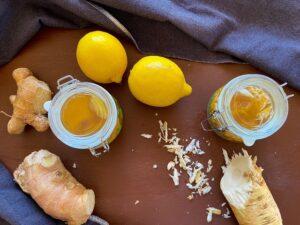Hungary is the most important horseradish producer in the European Union
Hungarian horseradish is in demand abroad, and cultivation is basically concentrated in one district. Feel free to choose the domestic horseradish from the excellent quality horseradish for the Easter festive table – warns the National Chamber of Agricultural Economy.

(Photo: Pixabay)
In 2022, horseradish production took place on an area of nearly 1,194 hectares in Hungary, and the harvesting work lasts from October until the beginning of the next planting season, i.e. until March. Based on the latest data, more than 10,000 tons of horseradish were produced in this country last season, which is almost half of the total annual harvest of the European Union. Thanks to the phased harvesting and storage technology, the Hungarian harvest is sufficient to serve not only the domestic market, but also more than half of the European market until the new horseradish is harvested. 80-90% of the horseradish produced in our country is exported, including to Germany, Poland, the United Kingdom and the Czech Republic, typically in fresh, juice form.
We don’t just use it at Easter
In addition to its well-known grated version, which is highly sought after during the Easter season, horseradish is also used as a flavoring for pickled and vinegared preserves (cucumbers, cabbage, beets, mixed cuts, peppers, slaw, etc.). The characteristic pungent taste of horseradish is caused by the butylthiocyanate and allyl isothiocyanate in its root. These compounds are very similar to the active ingredient of mustard oil, they act on the mucous membrane and lacrimal glands; this is why tears come to our eyes when consumed, and it also irritates our nose strongly. Freshly grated horseradish has a high vitamin C content; has a bactericidal and virucidal effect.
Horseradish is a native plant in our country
Its main growing areas used to be in the county of Hajdú-Bihar, Kiskunfélegyháza, and around Budapest, but today it has almost only one growing area left. Hajdúsági Torma is a product with a protected designation of origin (PDO) since 2008, which was also declared Hungarikumm in 2021, thanks to the growing landscape of Hajdúság – which lies at the junction of the Löszát of Ermellék and the Nyírség landscape unit. Horseradish grown in Hajdúság is unique thanks to the so-called buck-back production technology, which is cast in sand and on marshy meadow soil. This planting technology, which is typical for our country, can only be implemented where the climatic conditions and soil conditions are both given. 96 percent of the domestic cropland is located here, which provides a livelihood for hundreds of families.
The producers also produce the propagating material for the following year themselves. In terms of varieties, we can find landscape varieties such as the Bagaméri varieties created by selective breeding from the population known as the “Debrecen sweet noble” (e.g. Bagaméri Hungarian, Bagaméri 93/1, Bagaméri delikát), in addition, the Danish variety Danavit is also planted in a significant area.
NAK
Related news
More than 100 Hungarian farmers also demonstrated in Brussels
🎧 Hallgasd a cikket: Lejátszás Szünet Folytatás Leállítás Nyelv: Auto…
Read more >Hungarian champagne crowns the end-of-year holidays!
🎧 Hallgasd a cikket: Lejátszás Szünet Folytatás Leállítás Nyelv: Auto…
Read more >NAK: Domestic producers await customers with an ample supply of all pine species
🎧 Hallgasd a cikket: Lejátszás Szünet Folytatás Leállítás Nyelv: Auto…
Read more >Related news
Christmas shock in commerce: for the first time, we can pay with bank cards in fewer places
🎧 Hallgasd a cikket: Lejátszás Szünet Folytatás Leállítás Nyelv: Auto…
Read more >Hungarian Confectionery Manufacturers Association: trends in 2025 and prospects for 2026
🎧 Hallgasd a cikket: Lejátszás Szünet Folytatás Leállítás Nyelv: Auto…
Read more >Most grocery chains will be open until noon on December 24th
🎧 Hallgasd a cikket: Lejátszás Szünet Folytatás Leállítás Nyelv: Auto…
Read more >






